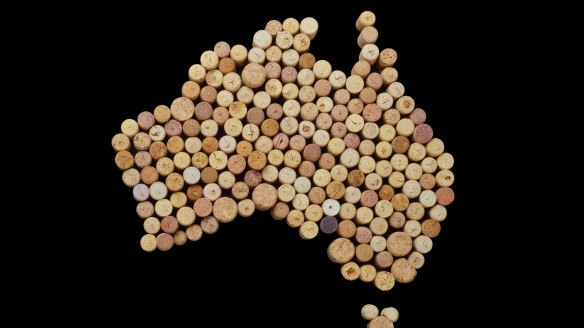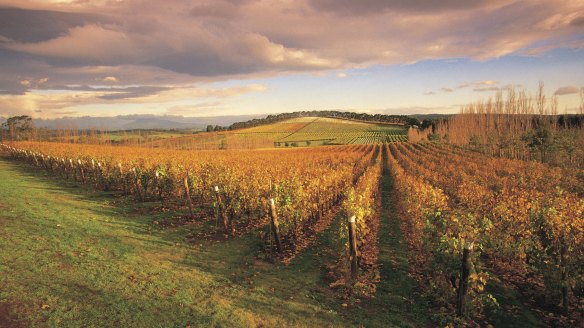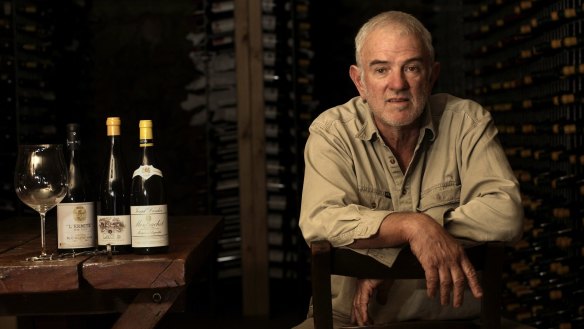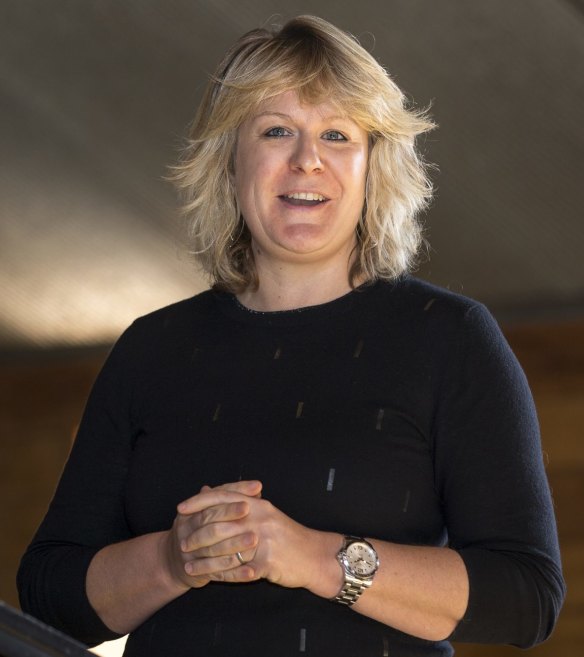How climate change is affecting the Australian wine industry

What is global warming doing to our wine? It is a question on the minds of many in the Australian industry.
The 2019 Australian grape harvest is under way but it has taken a hit from the fact this summer has been one of the hottest and driest on record.

According to Australia's globe-trotting viticulturist, Dr Richard Smart, the world's wine industry "is the canary in the coal mine because it's the early warning system".
All over the world, wine growers report that grapes are ripening earlier. So far, the effects on the taste of wine have not been adverse, as winemakers are learning how to deal with hot seasons.
They are watering the vines more – if they have water available. They're managing the vine canopies better to provide optimal leaf shading for the bunches. They're mulching their vineyards to retain moisture in the soil beneath the vines. In some cases, they're changing their trellising system so they can better manage the canopy. Some are even switching their vine plantings to cooler parts of their properties, such as south or east-facing slopes instead of north or west, because less-exposed sites are cooler. Beechworth winery Giaconda did this several years ago, winemaker Rick Kinzbrunner grafting its too-hot pinot noir site over to chardonnay and planting a new pinot noir vineyard on a cooler slope.
We have two choices. All move to Tassie or try to adapt to a hotter, drier climate.
But perhaps the most effective way to manage global warming is to replant with grape varieties that are more heat- and drought-tolerant, such as the southern Rhone Valley mainstay grenache. It's a strange quirk of Australian vineyards that we are wedded to the classic French varieties, such as chardonnay, sauvignon blanc, cabernet sauvignon, merlot, pinot noir – all cool-climate varieties that don't tolerate heat and drought.
According to Riverland viticulturist Ashley Ratcliff, of Ricca Terra Farms, we should be planting grapes indigenous to warmer climes, such as nero d'avola, montepulciano, vermentino, fiano, tinta barroca and arinto. But who's ever heard of arinto? Experience shows wine drinkers don't rush to buy wines made from unknown varieties. They are creatures of habit and loath to change. It takes a lot of time and money to establish a market for a grape variety nobody has heard of.
Ratcliff recently wrote an open letter to Riverland winegrowers pleading with them to plant varieties that are suited to their land. He showed that chardonnay was uneconomic to grow in the Riverland this year, costing more to grow than it earned, whereas the Sicilian grape nero d'avola, planted on the right rootstock, was very profitable. It uses 50 to 60 per cent less water than classic French varieties, Ratcliff says.

But this is not just Australia's problem. It's global. In France's classic unirrigated regions such as Burgundy they are talking about legalising irrigation. The world's leading viticultural climate scientist, Professor Greg Jones of Oregon, has said that wine regions may need to consider changing grape varieties.
"People in the Napa Valley are now removing alcohol from wine whereas 20 years ago there was nobody in Napa doing that," he says. This is because hotter temperatures lead to higher alcohols in wines.
"Consumers, especially Americans, have accepted higher-alcohol wines," Jones says.

The style of red Bordeaux wines has changed radically since the 1990s from lighter, lower-alcohol wines of around 12.5 per cent to richer, fuller-bodied, riper, more powerful wines, which often weigh in at 14.5 per cent alcohol. And winegrowers are using new techniques to trick the vines into ripening their fruit later in the cooler part of the autumn.
Back in Australia, Brown Brothers took the radical step of making a major investment in Tasmania a decade ago because, as chairman Ross Brown observed at the time, the mainland was getting too hot.
The upside is that cold climates where grapes never used to ripen, such as southern Tasmania, Canada's Niagara Peninsula and parts of New Zealand, now do regularly. Tasmania is producing some outstanding shiraz, normally considered a warm-climate variety. So is New Zealand's Hawke's Bay.
In 2012, Jones made headlines around the world when he and his associates at the University of Southern Oregon predicted that temperatures would rise by an average of two degrees in the next 50 years. They studied climate records dating back to 1950 for 27 of the world's leading wine regions and found that average temperatures had increased by 1.24 degrees.
This news had observers predicting Tasmania would replace Coonawarra as Australia's leading cabernet region, Burgundy would graft its pinot noir over to grenache, Champagne would take over from Burgundy as the world's leading pinot noir region and southern England would replace Champagne as the home of the finest sparkling wine.
But viticulturists such as Ashley Ratcliff and Kim Chalmers of Chalmers family vineyards, at Heathcote, are interested in planting and making wine from grape varieties that suit the future hotter, drier conditions. Chalmers points out that Australia has 65 geographic regions that have disparate climates but are all planted to a similar set of grape varieties. "We have two choices," she says. "All move to Tassie or try to adapt to a hotter, drier climate."
Since the 1990s, the Chalmers family has been importing, trialling, propagating and making wine from dozens of grape varieties new to Australia. In their commercial nursery at Merbein in northern Victoria, they had 88 different clones and varieties from which they could make trial batches of wine. They used their experience to develop new vineyards at Merbein and Heathcote.
The most exciting varieties Chalmers has found are fiano and vermentino for dry whites, and nero d'avola and aglianico for reds. All are of southern Italian origin. According to her sources, 92 wineries are already working with vermentino. "It loves heat, its wine has elegance and finesse, a chalky texture and retains its freshness in the hottest conditions."
Fiano, she says, is easily the best she's worked with. "It's the variety on everyone's lips. It has high acidity right across Australia."
Nero d'avola is "the most drought-tolerant variety we've ever come across. It has low water demand and makes lovely reds, from the bright and juicy to the big and heavy".
And aglianico is very late ripening. "Even in the Murray-Darling it can ripen as late as Anzac Day. It builds complexity with high acid and high tannins, elegance and finesse. The style is similar to what we expect from cooler climate regions."
She and Ratcliff sing from the same hymn book. He is most excited about tinta barroca, arinto and montepulciano in addition to the above four.
The challenge is to first persuade grape growers to plant these vines, and second, to persuade drinkers to buy them. It won't happen overnight, but the changes have begun.
Smart, in a recent interview on Milton Wordley's People of Wine blog, said: "The world's wine industry, in comparison to the world's agriculture, is the canary in the coal mine because it's the early warning system. Growing wine grapes is so environmentally sensitive, you only have to look at a wine map of the world to see that. All of those discrete regions with climate benefits to some variety or other."
Smart was one of the first people to raise awareness of climate change impacts for the wine industry. In 1988, his suggestion at a conference that Bordeaux may soon be growing grenache made Frenchmen laugh out loud. He realised early on that Australia had planted most of its wine grapes in areas that were too hot for high-quality wine.
"As I've often written, the world's wine industry is going to be one of those most impacted (by climate change). Why? Because of the strong climate by variety interaction, of which we are all familiar. As the climate is going to change, we then have to change either regions or varieties. One of the biggest problems is that we don't have the appropriate varieties for a warmer Australia right now."
Well, perhaps we do, but we have to get more serious about them.